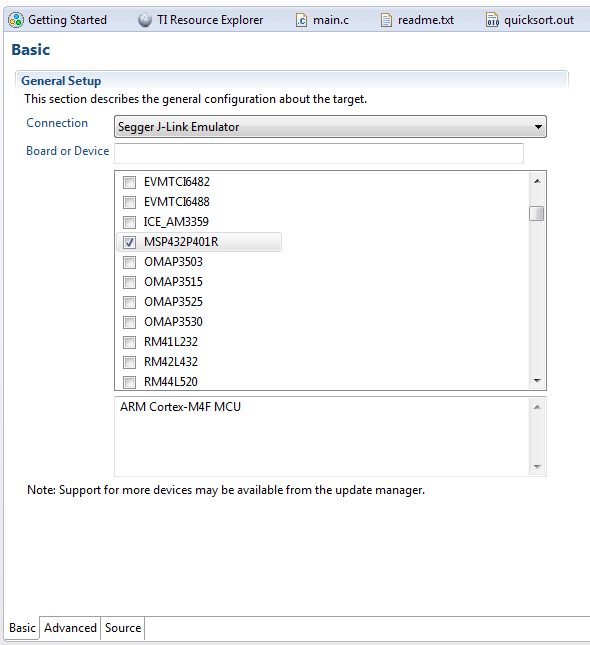Segger J-flash Arm Keygen
Sep 28, 2015 ProShow Styles Complete Pack – this set of styles and transitions to create beautiful presentations with your photos and video. Include: ProShow StylePack Volume 1-4, ProShow Transition Pack, ProShow Styles Escapes, ProShow Styles Grunge, ProShow Styles Vintage, ProShow StylePack. ProShow Styles Complete Pack - this set of styles and transitions to create beautiful presentations with your photos and video. Include: ProShow StylePack Volume 1-4, ProShow Transition Pack, ProShow Styles Escapes, ProShow Styles Grunge, ProShow Styles Vintage, ProShow StylePack Weddings. Proshow styles complete pack.
. Minimally intrusive.
Free tool. No license cost, no hidden fees. SystemView PRO: Unlimited recording. RTOS task, resource, and API tracing. Interrupt tracing for bare metal systems without an RTOS.
SEGGER SiFive-ARTY Adapter. The SEGGER SiFive-ARTY Adapter allows debug connections between J-Link and the ARTY board running SiFive RISC-V core bitstreams. The ARTY board provides several identical headers where the JD header is used as the debug connector, when running SiFive RISC-V bitstreams on the ARTY board. 24.-30.-8.06.25: SEGGER AVR. SEGGER SiFive-ARTY Adapter. The SEGGER SiFive-ARTY Adapter allows debug connections between J-Link and the ARTY board running SiFive RISC-V core bitstreams. The ARTY board provides several identical headers where the JD header is used as the debug connector, when running SiFive RISC-V bitstreams on the ARTY board. 24.-30.-8.06.25: SEGGER AVR.
Continuous real-time recording and live analysis with J-Link and SEGGER RTT technology. Live analysis of captured data - view responses to stimuli in real time without stopping the target. embOS, emNet, and FreeRTOS API call tracing as standard.
Can be adapted to other RTOS using a fully documented API. Works on any CPU. Real-time Streaming Trace (trace data is streamed to PC in real time, unlimited trace buffer).

SuperSpeed USB 3.0 and GigaBit Ethernet Interfaces for Highest Bandwidth. Up to 150 MHz ETM Trace Clock (works with all currently supported devices). Supports Tracing on Cortex-M0/M0+/M1/M3/M4/M7 Targets.

Supports Tracing on Cortex-A5/A7/A8/A9/A12/A15/A17 Targets. Supports Tracing on Cortex-R4/R5/R8 Targets. Full J-Link Functionality. Easy to use with Ozone and Embedded Studio. Cross-platform Support (Windows, Linux, Mac).

Free Software Updates. NXP Kinetis K66 MCU (MK66FN2M0VMD18) 180MHz, ARM Cortex-M4. 1.8' LCD module (resolution 160x128). On-board debug probe (K22FN128, mini A/B-type connector); SWD/SWO only, no VCOM port support. External debug interface (19-pin Cortex-M); incl.
NXP LPC54605 MCU (LPC54605J512) 180MHz, ARM Cortex-M4. External debug interface (9-pin Cortex-M). 1x USB host: full-speed, providing USB supply to device, A type receptacle (for directly plugging in A type devices/modules). 1x USB host: high-speed, providing USB supply to device, A type receptacle (for directly plugging in A type devices/modules). LEDs: 6x (2 status, 4 user LEDs). 1x USB micro B USB 2.0 receptacle for power only. Configuration free: no shorting links or solder jumpers required.
Dimensions 32mm x 32mm. PinFunctionDescription1STARTA positive pulse of any voltage between 5V and 30V with duration of min. 30 ms starts automatic programming (typically erase / program / verify) on falling edge of pulse.4BUSYAs soon as Auto-Function is started, BUSY becomes active, which means that transistor is switched OFF.5GNDCommon Signal ground.7OKThis output reflects result of last action. It is valid after BUSY turned back to passive state.
The output transistor is switched ON to reflect OK state. Known devices are supported devices which are also known by name. Knowing not just the CPU core, but also the device by name brings the following advantages:. Programming of internal flash (See). Availability of unlimited number of breakpoints in flash memory (See). Known memory map allows speed optimizations for access to Flash andRAM.
Support for non-standard CPU-cores & bugs in silicon: Some silicon requires special sequences for unlock, reset, or simply connecting to the core. For known devices, this is implementedNote that a device has not to be known by name to be supported.
This means that J-Link can be used with any device, using a standard core listed in the table of supported CPU cores even if it is known by name. The following list gives an overview about which devices are known by J-Link.
Note that your device may still be supported even if it is not in this list, as long as it incorporates a core that is listed in Supported CPU Cores. In case of doubt, please feel free to.The list from below is always valid for the latest version (highest version number) of the J-Link/Flasher software package. This may be a release (even version number) or beta version (odd version number), since support for some devices is usually added in a beta phase first. SpecificationsPower SupplyUSB powered, 100mA for Flasher ARM.
500 mA if target is powered by Flasher ARMUSB Host InterfaceUSB 2.0RS232 Host InterfaceRS232 9-pinTarget InterfaceJTAG 20-pin (14-pin adapter available)Max. Target cable lengthRecommended (delivered): 20cm (8')Max.
Segger Flasher Arm
2m (6.5') allowed but might reduce max. Target interface speed.Serial Transfer Rate between Flasher ARM and Targetup to 15MHzSupported Target Voltage1.2 - 5VCurrent drawn from target voltage sense pin (VT Ref).